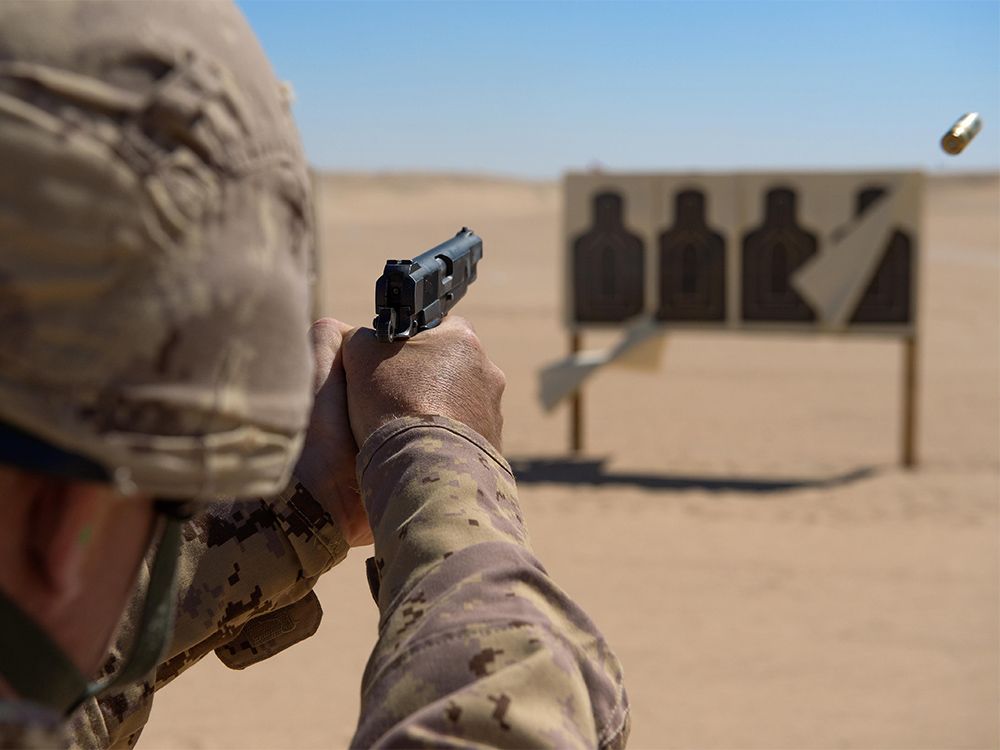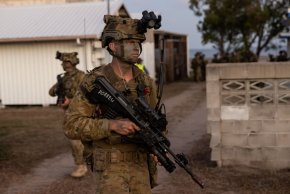Really interesting discussion on our future air defence capability. Long time lurker here thinking I might throw in my two cents.
That's not to say that I think we should acquire it, just pointing out that there is quite a challenge involved in assembling the GBAD capability we want. I suspect this is because GBAD is something the west is only starting to seriously revisit quite recently.
I fully agree that the ADF and western militaries generally have fallen behind on ground based air defence. There are understandable (if not justifiable) reasons for this, but it is where we are now. The question is how do we deal with it.
The Australian NASAMS solution looks to be an excellent first step in addressing this issue and will serve as a solid foundation for building up a multi-layered integrated air and missile defence system.
C-RAM
NASAMS is definitely not suitable for a C-RAM role, and is clearly not intended to be. Our current C-RAM capability is simply sense and warn with Saab radars (which the NASAMS CEA radars will also be capable of) and while something more than this would be nice to have, it probably shouldn't be a high priority for our near term spending.
Usually the best and most complete C-RAM capability is one that includes laying down extensive amounts of HE and frag on them first...
Totally agree!
C-RAM is mostly needed for either protecting your own civilian population in close proximity to an enemy launching indiscriminate attacks short of full scale war (e.g. Israel), or for protecting static expeditionary bases against irregular insurgents (e.g. western forces in Afghanistan and Iraq). As
@ngatimozart indicated, C-RAM may not be all that useful against a peer-technology enemy during full scale war launching barrages of precision guided rockets and conventional artillery. Much better to find and hit them
first before they find and hit you (to prevent a 2014 Zelenopillya-like situation).
C-UAS
When it comes to C-UAS, it really helps to have an idea of exactly what type of unmanned aerial systems are being considered. There is a massive and ever growing variety ranging from small hand launched systems to high altitude long endurance autonomous reconnaissance systems (and in the probable near-future semi-autonomous fighter jets). No single air defence system will deal with all of these.
To break it down into just two classes, most discussions about dedicated C-UAS capabilities are addressing
"low and slow" leaving the
"high and fast" to traditional air defences. Low and slow also tend to be
small and cheap, leading to the twin problems of
detection and
cost to engage. Keeping the cost to engage down leads to either soft-kill countermeasures, lasers, or hard-kill gun-based systems - ideally a combination of all three. Air defence missiles (even the latest
proximity fused stinger) are generally too expensive to field and use against most low and slow systems.
My opinion is that a C-UAS capability must be organic in some form or another to every close combat unit right down to the section level. I also think that in some ways the UAS threat has been overblown, as there really are many ways to address the threat posed by small cheap UAS systems. An example of this at the dismounted individual soldier level is the
Smartshooter Smash AD system, which
may be used in the SIG Sauer's US Army's Next Generation Squad Weapon (NGSW) optic. I really hope the Land 159 project is taking a close look at systems like these. Also at the dismounted individual soldier level is the
new Saab Guided Multipurpose Munition fired from the Carl-Gustaf M4 - I believe this has the potential to offer an organic air defence capability against larger manned and unmanned rotary aircraft.
Every vehicle remote weapons systems can and should incorporate C-UAS capabilities. EOS are already looking at doing something like this with their
Titanis C-UAS suite that could be integrated into just about all of our current and future combat vehicles. It includes an option for using the M230LF 30x113mm cannon with
new Northrop Grumman XM1211 proximity fused ammunition. Also our future armoured combat vehicles, the Boxer CRV and Lynx or Redback will all have the capability of firing 30x173mm programmable airburst and proximity fused rounds.
The advantage of all the above systems is that while they offer a C-UAS capability, they are also multi-purpose systems for use in traditional land combat.
On the detection front I see two primary options, active radar or passive infrared. For radar, dedicated hemispherical ASEA radars can be used either
vehicle mounted or
dismounted. Better would be dual purposing a vehicle Active Protection System radar like the
RADA aCHR system integrated into Elbit's IronFist APS. This looks to be the same radar used by
EOS in Titanis and using a single radar system for both missions would be ideal. For passive infrared detection, again sensors already integrated into a vehicle APS could be dual purposed or the detectors from a system like
IronVision could be used. While there is no integrated APS system doing all this just yet, the
SkyRanger 30 demonstrates a similar technology configuration dedicated to air defence. With current APS technology, current vehicle weapons and a SkyRanger 30 style integration, all the ingredients are there for creating a C-UAS capable Active Protection System. I suspect that Hanwha Defense, Elbit Australia and EOS Australia could be interested in making something like this work as part of the Redback IFV based on the IronFist, IronVision, and Titanis technologies.
Multi-layered IAMDS
I think the concept put forward by
@Boagrius of deploying NASAMS into more of a medium range role based on the AMRAAM-ER (which is essentially an ESSM with an AMRAAM seeker) is a very good one. Personally I'd like to see at least a third battery, but as with all such desires the manpower and money would have to come at the expense of some other capability.
This leaves "gaps" above and below NASAMS in terms of true SHORAD and HIMAD systems, but at least the latter can be looked at under AIR6500 Ph 2...
I would see the gap below covered by both organic C-UAS capabilities I discussed above and an armoured vehicle mounted SHORAD capability system mounted on Boxers or the new IFV platform. In addition to C-UAS and SHORAD capabilities, this could provide a measure of point defence C-RAM capability too. A ready to field solution for this would be the Rheinmetall SkyRanger system (a.k.a. Millenium, Mantis, AHEAD) having
already proven integration with NASAMS. However my personal fantasy fleet solution would be something like the
Centauro Draco with an OTO Melara 76/62 Strales 76mm gun firing DART guided projectiles modernised and paired with a CEA radar (
NORINCO of China has also developed a similar concept).
In terms of the gap above, yes Air6500 Phase 2 will be focused on Ground Based Air Defence in this space, but we also already have some coverage provided by the air force with JSFs and Wedgetails and the navy with SM-2 (and hopefully soon SM-6) missiles. For GBAD, I think something like
Option Four of this US Congressional Budget Office report using ground-launched LRASM and SM-6 missiles could be a versatile solution - Australianify it using HX77/HX81 truck mounted launchers, the
Kongsberg fire control unit already used in NASAMS, and CEA developed radars.
Finally, the gap above also includes ballistic missile defence that could be addressed in the medium term by the Navy with Aegis BMD using SM-3 and SM-6 missiles.


